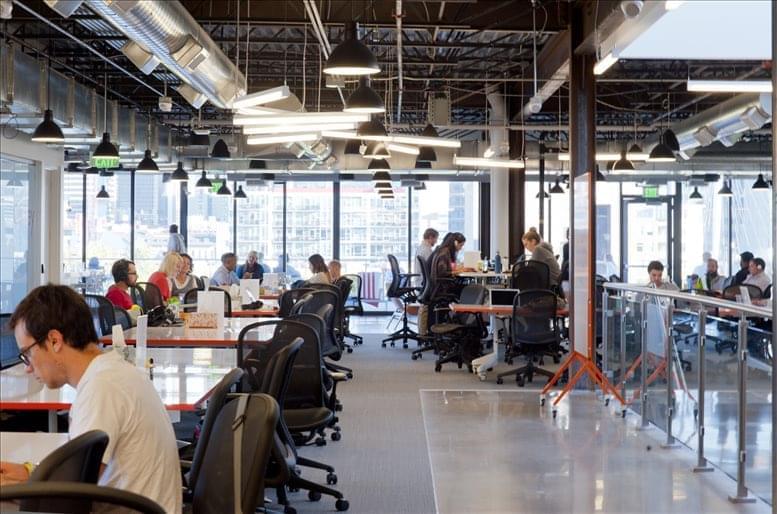
Shared office workspace has risen in popularity over the previous decade. The popularity of coworking has grown in tandem with the prominence of some jobs that lend themselves to working remotely. The freelancing economy has expanded, allowing shared office spaces to thrive. There are numerous advantages to coworking, particularly if you have a remote job. Coworking spaces are perfect for writers, developers, entrepreneurs, and even corporate employees that work in remote teams.
Renting a shared workspace can help remote employees escape the loneliness of working from home by providing a community, a built-in set of resources, and a lovely office with all the facilities that come with a professional workspace.
Remote work from home has numerous advantages, like flexible hours, cost savings, no commute, and freedom and control over how you work, to mention a few. And it appears that remote work is becoming more common. According to UpWork’s 2nd annual Future Workforce Report, the majority of businesses are already embracing remote work, with 63% of businesses employing full-time employees who work outside the office.
In terms of coworking growth per capita, the United States is ranked eighth in the globe. According to Coworkingresources.com, a coworking space opens in London every 5 days and in New York City every 7.5 days. For remote employees, coworking has become the new normal.
What remote jobs lend themselves to shared office spaces?
Freelancers and entrepreneurs aren’t the only ones who benefit from remote coworking. Shared office spaces are ideal for writers, coders, creatives, and others. Even customer service representatives and sales representatives can work from home. Even if you work for a large corporation, you may be allowed to work remotely in a shared office space from time to time.
But what makes shared office spaces so successful?

1. They boost employee productivity.
Since joining a coworking space, 74% of employees say they’ve been more productive.
64% are more capable of completing duties on time while 68% reported that they were able to focus better.
It’s important to recognize that the ideal settings for productivity aren’t the same for everyone, as evidenced by recent COVID-19 statistics on telework. According to PwC, 28% of employees indicated they were less productive while working from home, while 29% said they were more productive. (RELATED: How did the pandemic shape the coworking space industry?)
Workers can get more done in a private office or coworking space by creating an atmosphere that eliminates distractions and boosts productivity with enterprise-grade infrastructure, fully equipped meeting rooms, and private, dedicated office environments that stimulate creativity and collaboration.
2. Professional Development
69% of remote workers claimed that being in a coworking space helped them learn new skills while 68% said they experienced growth in skills. Advancements in any business are continuously changing, and people who work from home often miss out on opportunities to learn from their coworkers on a daily basis.
Coworking gives remote workers location freedom while also allowing them to continue learning and growing. Shared office spaces deliver enterprise-grade tools and services to ensure no one misses a beat and has the same resources as a corporate-structured setting.
3. Connection + Community + Collaboration

86% of remote workers say they developed a larger professional network. And since joining a coworking space, 93% reported that their social network has grown. 67% also said that they became more creative and wished to cooperate on projects more. 83% of remote workers have also reported feeling less lonely since joining a coworking space.
Technology advancements have enabled us to work smarter than ever before. Despite all of the technologies available to keep remote workers connected, nothing compares to the benefits gained when a team collaborates in the same location.
Employees can create professional and personal networks in the unique setting of coworking spaces, which is not possible in a home office. Through daily contacts, monthly events, and social gatherings, shared office space offers a community that fosters connections both within your own team and with other members. Because you never know when the next big idea will come from a fresh conversation!
4. Improved Health
Since joining a shared office space, 89% of tenants have reported feeling happy and 60% said they’re more calm at home since they started coworking.
Employees’ health is important. When a work area is linked to an employee’s personal space, a good work/life balance allows employees to be more productive when on the clock, but it can be difficult to sustain long-term. Having a designated offsite workplace for your remote staff helps to keep the two worlds separate.
Shared offices also include top-of-the-line amenities, which include ergonomic chairs, standing desk alternatives, natural lighting, and a variety of additional advantages developed specifically for members.
5. Some Are Open 24/7
While not all shared office spaces are open 24 hours a day, in some of the greatest cities for remote work, you can typically find one that is.
That way, if you need to work late, come in early, or take a call on the weekend, you may do so easily. When working on a tight deadline or squeezing in some work on a Sunday to get ahead for the week, you might not be alone.
6. Cost

Teams of less than ten members would save an average of $12,435 in their first year while teams of ten or more would save between 20%-30% on per-employee costs.
With flexible terms, the ability to scale up as a business expands, and full-service amenities that allow coworkers to simply walk in, plug in, and work, it’s simple to see how coworking can save money for both businesses and employees. While working from home may appear to be a cost-effective option, employers must factor in the costs of reimbursing employees for home office setup, purchasing appropriate equipment, and maintaining security measures, to mention a few.
Summary
People who cowork have higher levels of thriving than their office-based counterparts, thanks to a combination of a well-designed work environment and a well-curated work experience. What matters most for high levels of thriving, though, is that people who work in shared office spaces have significant autonomy and are able to be themselves at work.
Giving employees the room and support to be their real best self is the best advice for traditional organizations looking to learn from coworking spaces. Employees will feel more devoted to your company as a result, and will be more inclined to bring their best energy and ideas to work each day. It doesn’t matter if it’s the business headquarters.

Enterprise software development experience. More recently in positions including CTO, Lead Developer and Head of Product in Australia. Deep expertise in property and legal technology in Australia with a specialty in lead generation and tech scalability across Asia-Pacific.